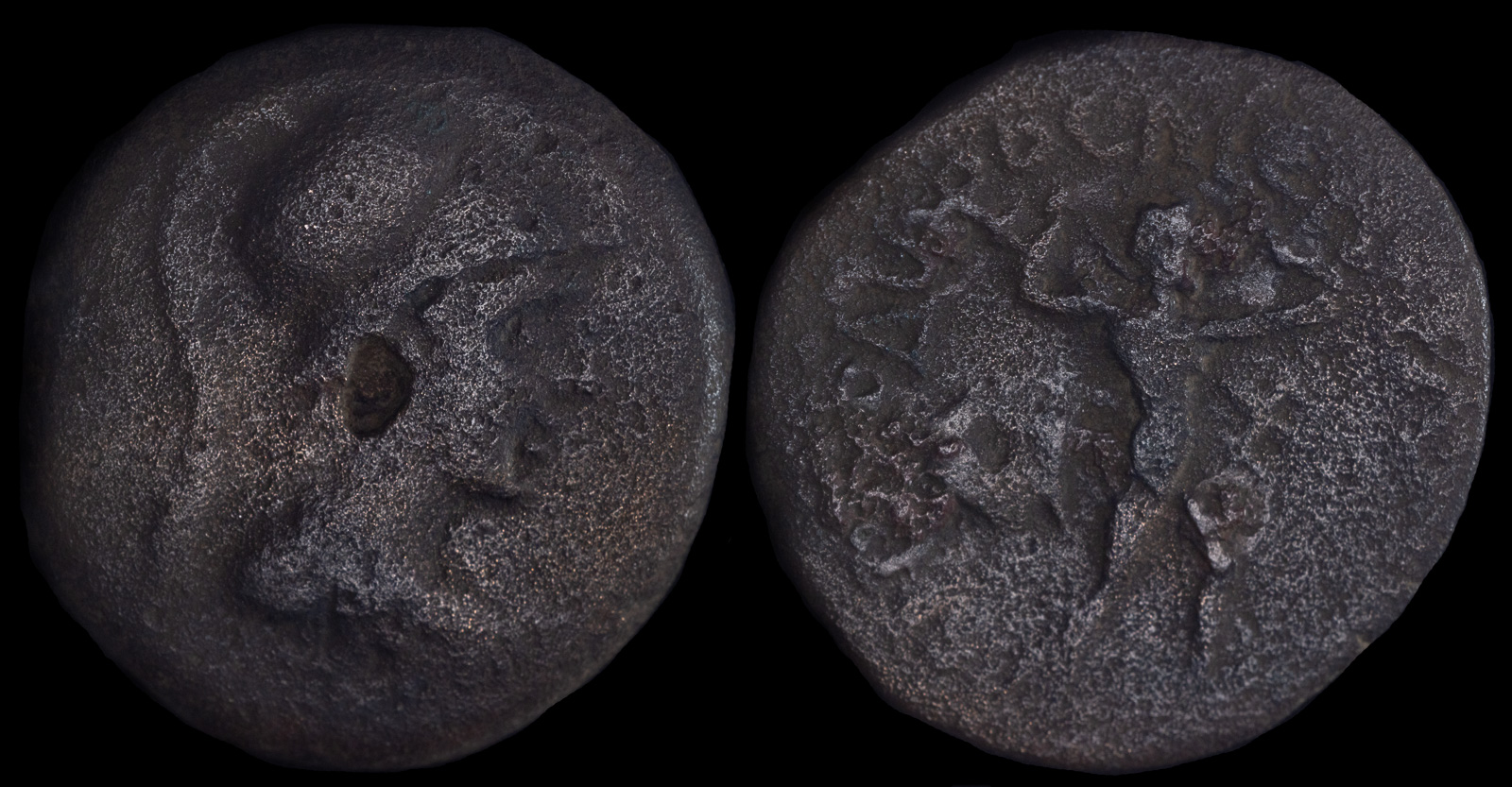
Achaia, Patrae
circa 45-40 BCE
Æ 18mm, 3,51g
Obv. Helmeted and draped bust of Athena right.
Rev. APICTAPXOC ΔAMWNOC ΠATPЄWN, Poseidon striding right, holding dolphin in left and thrusting trident with his right; to left, Patrae monogram.
BMC 5var; SNG Fitzwilliam 3563; BCD Peloponnesos 515
Patrai was the ancient city that is now Patras, the third largest city in Greece. I drove through the city on my way to the Peloponnese, though I didn’t stop. It has a very impressive bridge and several interesting museums, but I already had a very full day.
The city was a factor during the Mycenaean times and has been occupied for thousands of years. In 419 BCE, on the advice of Alkibiades, they constructed long walls similar to those at Athens. Later on, it was an important city in the Achaian League.
Interestingly, it wasn’t until deep into Roman times that the city minted its own coinage.
Patrai is connected with its harbor by long walls.
Aristodemos, a general of Antigonos Monophthalmos, frees Patrai from its garrison of Kassander.
Patrai and Dyme found the Achaian League.
197 BCE